Gynecology & Obstetrics
Open Access
ISSN: 2161-0932
ISSN: 2161-0932
Research - (2019)Volume 9, Issue 12
Background: When labor pain appears, pharmacological and non-pharmacological techniques can be offered as pain relief methods. Midwives may offer local heat application as a pain relief method. This paper presents the design, implementation and evaluation of the prototypes of a non-pharmacological method consisting of a thermal belt designed by midwives, which provides comfort and pain relief through the application of thermotherapy on both lumbar and suprapubic areas during labour.
Method: Prototypes of a thermal belt were designed, tested and protected as a business model. A randomized, parallel, open, non-blind clinical trial was conducted at the University Hospital Germans Trias i Pujol, from Badalona (Barcelona) to assess the beneficial effects of heat application on lumbo-suprapubic pain during initial stages of labour. Participants were pregnant women in the prodromal, early and active labour (up to 4-5 cm of dilation), with lumbo-suprapubic pain. The intervention group received local heat at a temperature between 38-39°C on the lumbo-suprapubic areas for 30 minutes using an elastic pelvic belt as a pain relief device and was compared to a control group in which no heat was used.
Results: show that the application of local heat on lumbo-suprapubic areas during labour is effective since, after the intervention, pain level in the study group decreased significantly in the Visual Analogic Scale; and the thermal belt obtained a positive response amongst pregnant women who used it: tested with a global satisfaction index mean score of 80,94% over 100%.
Conclusion: Heat application on both lumbar and suprapubic areas in case of labor pain is effective in relieving pain. The heat pads subjection device, a new abdominal two-pocket belt, obtained positive feedback from women in the study group who used it and answered the satisfaction questionnaire.
Labour pain; Pain relief; Elastic two-pocket pelvic belt; Heat pads; Midwifery care
A wide range of options can be offered to childbearing women when labour pain appears. When labour takes place in a hospital, these options include both pharmacological techniques, such as epidural anaesthesia [1]; as well as nonpharmacological techniques, such as hot water immersion [2,3], sterile water injections [4], other alternative support materials [5,6], or intermittent application of heat and cold pads [7,8].
Midwives routinely offer local heat application as a pain relief method. Blood vessels dilate with heat, thus improving blood circulation and temporarily blocking the transmission of pain signals to the brain [9,10].
Heat can be applied to the entire body through warm water immersion or shower, by locally applying warm water bags, hot electric pads or hot seed pads.
When applied locally, it may be advisable that heat covers both lumbar and suprapubic areas simultaneously, since both of them are considered to be the most painful areas during the onset and first stage of labour.
However, all these local thermotherapy methods currently lack a satisfactory fastening device.
This paper presents a new concept and design for a nonpharmacological pain relief method.
Midwives from the Obstetrics and Gynecology Unit at University Hospital Germans Trias i Pujol (HUGTiP), Barcelona, in collaboration with the Innovation Department of the Germans Trias i Pujol Institute (IGTP), have developed a device for the application of thermotherapy on the lumbosuprapubic areas; consisting in an elastic, two-pocket pelvic belt registered as a business model (ES20170030826U20170711), which allows placing and hold heat and cold pads on lumbar and suprapubic areas when pain appears.
Design concept
The concept behind the proposed pain relief method was based on the recurrent need to improvise a way to fasten the heat pads to women´s bodies in the delivery ward.
A. What midwives previously used to apply local heat during the onset and the first stage of labour: An essential first step in the development of a new device for local heat application during labour, is to analyze what was being previously used for this purpose.
In our delivery ward, women are allowed to move and change positions freely throughout labour, including walking, seating, or laying in bed as the patient chooses.
Midwives routinely offer local heat application as a pain relief method in labour. However, electric heat pads and hot seed pads need a fastening system in order to cover the painful areas properly when pregnant women move.
Midwives in our ward have traditionally used an elastic band used to fasten the cardiotocography electrodes to fasten the heat pads as well Figures 1 and 2.
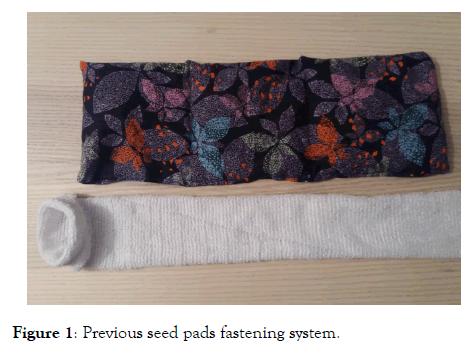
Figure 1. Previous seed pads fastening system.
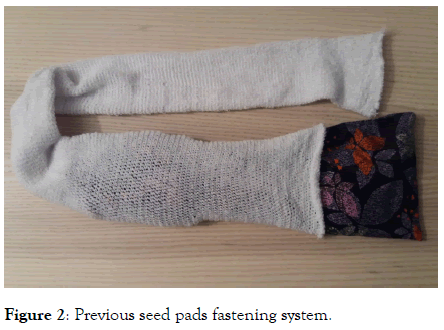
Figure 2. Previous seed pads fastening system.
However, this rather rudimentary use given to the elastic band did not allow the application of heat pads on both lumbar and suprapubic areas; only one heat pad could be placed on the one area causing the most pain to women.
B. Concept of an elastic two-pocket pelvic belt: On the one hand, being able to apply heat pads on both lumbar and suprapubic areas simultaneously using a better fastening device was a recurrent idea.
On the other hand, electric pads are not suitable at all because they need to be plugged and this fact interferes with the woman ´s mobility.
A sewing pattern was designed based on the pregnant woman´s abdominal and pelvic shape Figures 3 and 4.
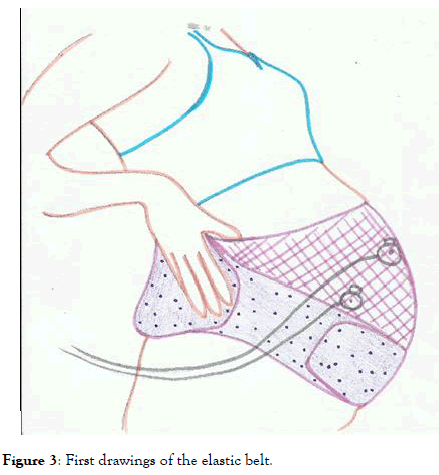
Figure 3. First drawings of the elastic belt.
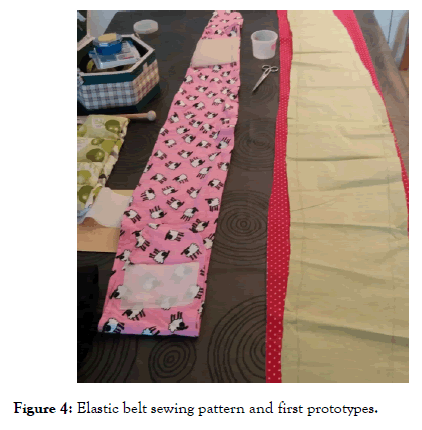
Figure 4. Elastic belt sewing pattern and first prototypes.
Sewing patterns were also designed for two seed-pad filled outer shells which fitted the lumbar and suprapubic pockets.
C. Prototype:
1. The thermal belt:
Functional characteristics and technology applicability: One basic conceptual feature is that the elastic pelvic belt should be easy to adjust and fasten, so that after a short guidance of a midwife, women could use it without help.
We chose an elastic 95% cotton and 5% spandex, 180 g/m2 weight fabric to produce the belts due to its elasticity, comfort and adaptability to the body shape.
The belt can be easily adjusted with a Velcro® fastening and counts with two Velcro®-closed wide pockets, one to be placed on the lumbar area and the other on the pelvic area.
The length and width of Velcro® fastening areas allow for a one size belt to adjust different body shapes and weights of all attended childbearing women.
To apply the thermotherapy, heat or cold pads should be placed inside each pocket.
Thanks to the two-pocket system, the pads can be easily removed from the belt in order to wash the different parts Figures 5-7.
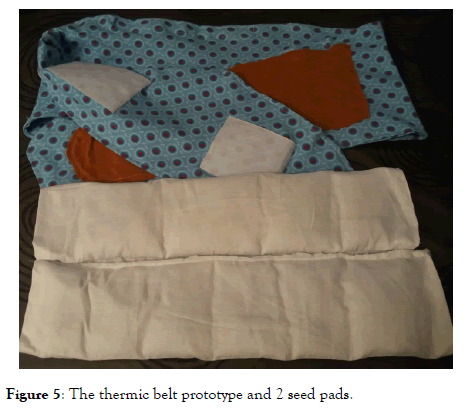
Figure 5. The thermic belt prototype and 2 seed pads.
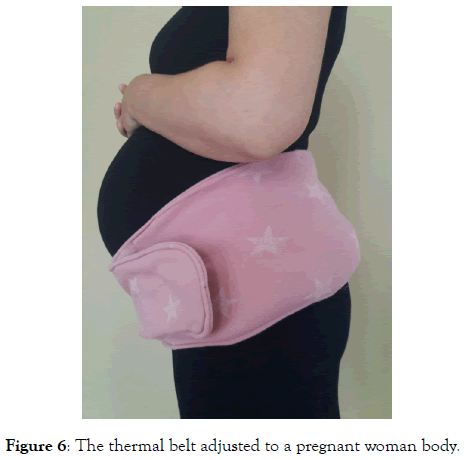
Figure 6. The thermal belt adjusted to a pregnant woman body.
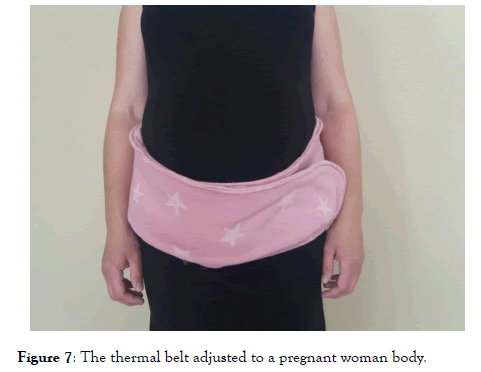
Figure 7. The thermal belt adjusted to a pregnant woman body.
The inner side of each pocket is covered with thermal fabric to help keep the seed pads temperature longer.
The inner side of each pocket also includes a button that matches with seed pads removable outer shell buttonholes.
Their purpose is to make it easier to attach the seed pads to the painful areas and prevent them from moving when the childbearing woman moves.
2. The seed pads: The pads are filled with linen seeds and the outer shell is made of 100% cotton fabric. The pads can be heated in the microwave at a standardized time and power so that the application temperature on maternal skin does not exceed 38°C-39°C.
The seed pads design includes a number of features aimed at improving the painful areas coverage:
-subdivisions have been sewed so that the seeds do not fall right to the bottom of the pad when the woman changes her position Figure 8.
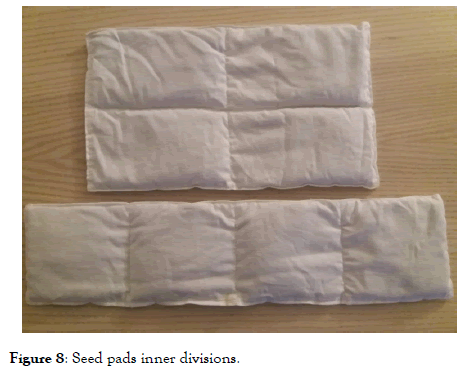
Figure 8. Seed pads inner divisions.
the seed pads have removable and washable covers. These covers include buttonholes that match the buttons inside the external pocket inner side for better fastening and coverage of the painful areas.
D. Business model protection: In collaboration with the IGTP, a technical and commercial assessment of the device “maternity elastic belt” was requested to an official agent of patents and trademarks. A patentability study was carried out: first of all, a literature review on the issue was done. We searched for similar devices that could have been previously developed, in order to see if the same technology was already available.
Searches:
1) Keywords: Belt, support, corset, strip, heat, warm, hot, thermal, pad, pack, pain, pregnancy, menstruation, suprapelvic, back, pelvic, sacroiliac, lumbar, suprapubic, pubic, bellyband and heat pack
2) International classification (Table 1: International classification codes)
| CODE | DESCRIPTION |
|---|---|
| A41B9/12 | Protective undergarments |
| A41C1/00 | Corsets or girdles |
| A41C1/08 | Corsets or girdles: Abdominal supports |
| A41C1/10 | Corsets or girdles: Maternity corsets |
| A61F5/02 | Orthopaedic corsets |
| A61F5/03 | Corsets or bandages for abdomen, teat or breast support, with or without pads |
| A61F5/028 | Braces for providing support to the lower back |
| A61F7/00 | Heating or cooling appliances for medical or therapeutic treatment of the human body (HCAMTTHB) |
| A61F7/08 | HCAMTTHB: warming pads, pans, mats. Hot-water bottles |
| A61F2007/0024 | HCAMTTHB: body part. Back |
| A61F2007/005 | HCAMTTHB: female |
| A61F7/02 | HCAMTTHB: compresses or poultices for effecting heating or cooling |
| A61F2007/0207 | HCAMTTHB: compresses or poultices for effecting heating,or cooling. Cataplasms, poultices or compresses, characterized by their contents; Bags therefor; Containing organic solids or fibers. Plants, seeds, fruits |
Table 1: International classification codes.
3) Combining keywords and international classification
The following databases were used: Chemical Abstracts, Medline and Espacenet
More than 300 documents were retrieved and reviewed. Twenty of them were chosen and analyzed due to its relevance. Finally, the patentability study suggested that choosing a business model protection would be a suitable solution. Since July 2017 the thermal belt is registered as a business model.
E. Randomized clinical trial and evaluation: To test the viability of the thermal belt prototype, a randomized, parallel, open, non-blind clinical trial was carried out at Obstetrics and Gynaecology Unit at University Hospital Germans Trias i Pujol (HUGTiP) from Badalona, Barcelona. The objective was to assess the effects of heat application on lumbo-suprapubic pain during the initial stages of labor. We hypothesized that lumbar and suprapubic heat application with the thermal belt would decrease the pain level, measured with the Visual Analogic Scale (VAS) in the intervention group and that the differences would be statistically significant.
The institutional Ethics Committee for Clinical Research approved the study (PROTERMIC PI-17-092), as did the hospital´s nursing management and the Obstetrics and Gynaecology Unit´s management. Written informed consent was obtained from all participants. The ethical standards of the Declaration of Helsinki were followed and the study was registered in the EUDRA-CT registry as a clinical trial (2018-001465-16).
1. Methods: Randomized, parallel, open, non-blind clinical trial was set up. Pregnant women delivering at University Hospital Germans Trias i Pujol in Badalona, Barcelona, between September 2017 and January 2018 were eligible for inclusion. Our calculated sample size target was 126 participants, 63 on each group with a 95% confidence level, an alpha and a beta level of 5% and 80% power. The intervention group applied local heat on the lumbo-suprapubic areas using an elastic pelvic belt as a pain relief method. The intervention group received lumbo-suprapubic heat with the thermal belt for 30 minutes and was compared to a control in which no heat or other pain reliever was used during the same period of time. Heat pad temperature was set at 38-39°C and women could eventually use it as much as they wanted throughout labour. The pads were heated in the Obstetrics and Gynaecology Unit microwave; previously a seed pads heating pilot study was carried out in order to standardize a heating time and power for the ward´s microwave so that the application temperature on maternal skin did not exceed 38-39°C.
The independent variable was the application of lumbosuprapubic heat seed pads using the thermal belt when pain associated to early stages of labour was detected. We chose a 30 minutes application period based on Ganji´s hot water application and 38-39°C for both mother and foetus was demonstrated to be safe [7]. Also, the following dependent variables were defined:
1) Pain level at baseline (T0) measured with the Visual Analogic Scale (VAS); and pain level 30 minutes after the intervention (T30) in both groups, also measured with the VAS
2) VAS variation (Δpain): defined as the pain level difference between perceived pain at baseline and perceived pain 30 minutes after the intervention
The use of the thermal belt was evaluated in the study group with an ad hoc satisfaction questionnaire. It contains 5 Likert type questions which rate 1 to 4 and form a global satisfaction index; the minimum satisfaction level was 5 and 19 was the maximum. Three open questions were added in order to get a qualitative approach to thermotherapy and belt use.
Other variables were: age, labour stage, TPAL formula (Term, Preterm, Abortion, Living), pregnancy weeks, amniotic membranes integrity, labour augmentation, epidural anaesthesia, type of birth, Apgar test punctuation, and perceived comfort using the thermal belt measured with the satisfaction questionnaire in the intervention group.
2. Results: One hundred and thirty-four women were included, 67 on each group:40,3% (54) were in prodromal labour, 53,7%(72) in early labour and 5,2% (7) in active labor (≤ 4-5 cm). The pre-intervention pain level in the study group, measured with the VAS, was 0.71 points higher (6.3 ± 1.6) than in the control group (5.6 ± 1.8) p=0.02 (t-test). At 30 minutes of heat application, the pain level in the study group decreased 0.65 points (5.8 ± 1.8) while it increased significantly in the control group (6.5 ± 1.8) p=0.046 (t-test). Comparing pre and post-intervention pain levels (Δpain), in the study group pain decreased 0.4 ± 1.4 and in the control group, it increased 0.9 ± 1.1, which represents a significant difference of 1.3 points p<0.0001 (t-test) between groups pain variation. ΔPain was adjusted by a general linear model; this additional analysis also shows a significant difference in the Δpain between groups.
Women in the study group filled in a specific ad-hoc nonvalidated satisfaction questionnaire regarding the perceived pain relieve effect of the heat pads and the use of the pelvic belt; 34.3% of them (n=23) already knew about the use of heat application to relieve labour pain and from those 23, 16 (76.2%) had previously used heat somehow at their homes, which consisted in hot shower in 43% (n=7); electric heating pad in 37.5% (n=6); hot water bag in 12.5% (n=2) and hot seeds pad 6.25% in one case (Figure 3). The mean satisfaction score was 15.4 ± 2.1 (5-19), which corresponds to 80.9% over 100%. Using the thermal belt was felt as comfortable for 95% of the intervention group (n=44), practical for 90.9% (n=30) and pleasant for 97% (n=32).
The questionnaire included a section for open comments where 6 women wrote: “while I was using it, I felt that the contraction pain decreased” (1 comment); the hot seeds smelled pleasantly for one woman and unpleasantly for another (2 comments); “a hot-cold contrast could also be useful to mitigate pain I guess, I would have liked to try that” (1 comment) and the belt with the two heat pads in its pockets felt a little bit heavy for two women (2 comments).
3. Conclusion: Heat application on both lumbar and suprapubic areas in case of labour pain is effective. The heat pads fastening device obtained positive feedback from women in the study group who used it and answered the satisfaction questionnaire.
F. License and commercialization: Once the thermal belt was protected as a business model and the clinical trial was conducted, we aimed to get the industry´s attention so that the prototype could be manufactured and sold by a company that would commercialize it. Our objective was that the belt could be used in other hospitals ´maternity wards as well as by women in their own homes during the prodromal stage and the onset of labour.
Finally, in July 2018, a license contract was signed between the HUGTiP, the IGTP and the company KUSIWAWA for the elastic two-pocket pelvic belt and the two seed pads kit to be manufactured and commercialized.
We searched for evidence about lumbo-suprapubic pain relief methods during pregnancy and labour; literature confirmed that lumbo-suprapubic pain is a problem amongst childbearing women and that despite the wide range of non-pharmacological treatments available this problem is not yet satisfactorily solved. Chang, in the study about how pregnant women manage lumbopelvic pain highlight that women “are unlikely to seek or use pain management treatments for pain” [11]; the most frequently reported treatments were: mechanical treatments (80%), herbal medicine (9%), exercise (6%), and medication (6%). Bishop, in a national cross-sectional survey of UK physiotherapists, describes the home exercise as the most commonly reported treatment recommended by physiotherapists (94%) [12]. Nilsson-Wikmar compared the effect of three different physical therapy treatments on pain in pregnant women with pelvic girdle pain and they concluded that girdle pain seemed to improve with time in all 3 treatment groups [13]. However, the Cochrane systematic review on “Interventions for preventing and treating low-back and pelvic pain during pregnancy ” reported low to moderate evidence that exercise significantly reduced pain [14].
Mechanical treatments appear as a very common treatment. Different studies compare the application of pelvic support belts as a treatment for pregnancy pelvic pain. Mens et al. analyzed the mechanical effect of a pelvic belt and confirmed that the use of a pelvic belt significantly reduces the mobility of sacroiliac joints, which might be the basis for studies on the effectiveness of support belts [15]. Ho et al. first reviewed the effectiveness of maternity support belts in reducing lower back pain during pregnancy [16] and then analysed the actual garment needs of pregnant women [17]. Some clinical trials compared the use of two different support garments as a pregnancy-related symphyseal or back pain treatment [18,19]. Kordi compared the effect of lumbopelvic belts and home-based pelvic stabilizing exercise on pregnant women with pelvic girdle pain [20]. All results show a reduction in the severity of pregnancy-related back and pelvic pain in the groups where a pelvic support belt was used.
However, the device we were developing was not a mechanical device; it was meant to relieve pregnancy and labour-related pain by applying thermotherapy. That is why we searched for similar devices that might have been previously developed, in order to check if the same technology was already available but we did not find any which matched all the features of our thermal belt.
The thermal belt is an elastic belt, that adjusts to the pregnant woman´s pelvic perimeter without a compressive effect and which allows applying thermotherapy in order to relieve labour pain. The two-pocket system makes it very easy for the pads to be changed and for the different parts to be washed. The belt covers both lumbar and suprapubic areas, which are the areas that women describe as the most painful during labour. Heat pad temperature is set at 38-39°C and women can eventually use it as much as they want throughout labour.
This technology could be a useful non-pharmacological pain relief tool that could become current clinical practice. The fact that the device is a low cost, easy to use, one size, hygienic and reusable makes it suitable for use in any delivery or maternity ward.
This paper presents the design, implementation, and evaluation of a new, non-pharmacological pain relief method for women in labour.
Women in the intervention group showed a significant decrease in the Visual Analogic Scale as well as reported high satisfaction levels in the global satisfaction index for the elastic belt. Thus this device has the potential to be a simple and effective nonpharmacological pain relief method for women in labour.
The authors have no competing interests to declare.
This study was undertaken through internal funding provided by the University Hospital Germans Trias I Pujol (HUGTiP) and the Germans Trias I Pujol Research Institute (IGTP). No other bodies or groups contributed funds towards the evaluation nor played a role in the analysis, and interpretation of data and in writing the manuscript.
Trial registration: EUDRA-CT 2018-001465-16
We thank the pregnant women who took part in our study, as well as Maria Ortega and Marc Cusachs for their support; Elisabet del Valle and Lídia Casas for their guidance in the patentability study; Dolors Roca, Sergio Alonso and all delivery ward midwives at HUGTiP for so willingly collaborating and being diligent and careful in the recruitment and data collection. This project was widely supported by the Germans Trias i Pujol Institute (IGTP) and University Hospital Germans Trias i Pujol (HUGTiP).
Citation: Tarrats L, Paez I, Navarri I, Cabrera S, Puig M, Alonso S, et al. (2019) Heat Application on Lumbar and Suprapubic Pain During the Onset of Labour Using a New Abdominal Two-Pocket Belt: A Randomized and Controlled Trial. Gynecol Obstet (Sunnyvale) 9:511. doi: 10.35248/2161-10932.19.9.515
Received: 03-Oct-2019 Accepted: 10-Dec-2019 Published: 17-Dec-2019
Copyright: © 2019 Tarrats L, et al. This is an open-access article distributed under the terms of the Creative Commons Attribution License, which permits unrestricted use, distribution, and reproduction in any medium, provided the original author and source are credited.